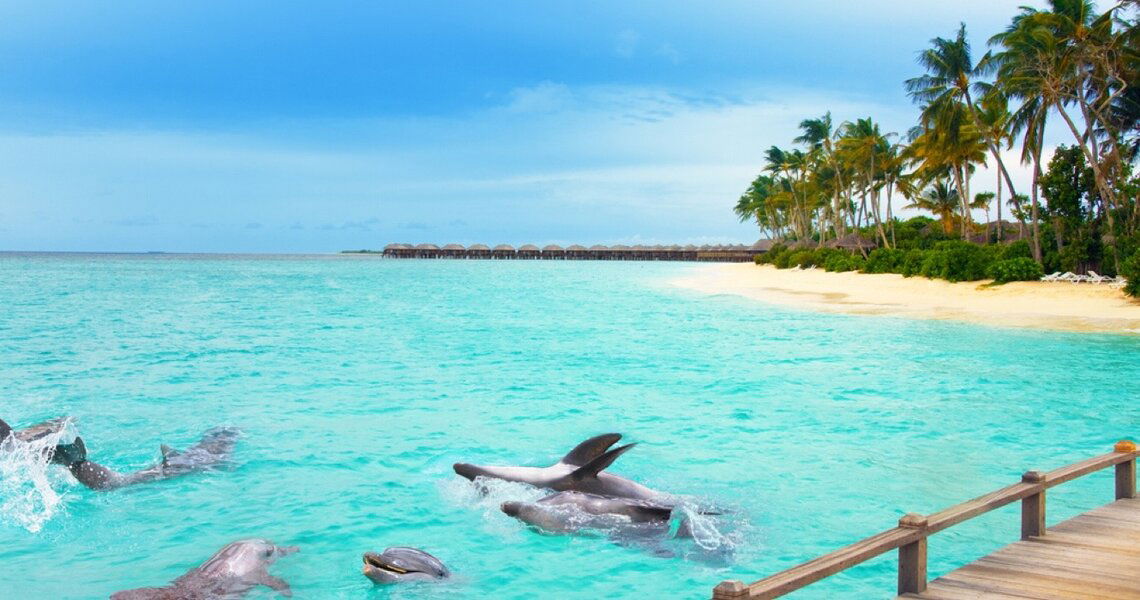What is it like scuba diving in the Maldives?
The Maldives, with its crystal-clear waters, vibrant marine life, and stunning coral reefs, offers one of the most extraordinary scuba diving experiences in the world. This tropical paradise is a magnet for divers of all skill levels, and it promises encounters with some of the most diverse and colorful underwater ecosystems.

img via freepik
1. Liveaboards vs. Resort-Based Diving
When looking at the Maldives, things to do regarding diving are narrowed down to two primary options: staying at a resort or embarking on a liveaboard. Both options offer world-class diving experiences, but your choice will depend on whether you prioritize convenience or maximum dive time.LiveaboardsUnlimited Access to Dive Sites: For avid divers looking to maximize their time underwater, a liveaboard is an excellent choice. These dive boats take you from atoll to atoll, giving you the chance to explore multiple dive sites across different regions of the Maldives.
Resort Diving
Convenience and Comfort: Many Maldivian resorts such as Milaidhoo Island Maldives cater to divers, offering full dive facilities, in-house dive schools, and easy access to house reefs. Resort-based diving is perfect for those who want a balance between luxury and adventure.
2. Varied Dive Sites for All Skill Levels
The Maldives caters to divers of all experience levels, from beginners taking their first plunge to seasoned professionals seeking more advanced sites. The diversity of dive sites is one of the many reasons the Maldives is a favorite destination for scuba enthusiasts.
Beginner-Friendly Dives
House Reefs: Many Maldivian resorts have their own house reefs, which offer easy access for beginner divers. These sites typically have shallow waters and minimal currents, allowing newcomers to enjoy a safe and comfortable dive.
Advanced Dive Sites
Channels and Drift Dives: For more experienced divers, the Maldives offers challenging channel and drift dives. These dive sites often involve strong currents, which attract larger pelagic species like sharks and rays. Drift diving in the Maldives means letting the current carry you across the reef, making for a fast-paced and exhilarating experience.
3. Diving with Big Pelagics
The Maldives is renowned for its encounters with large pelagic species, including sharks, rays, and even dolphins. These majestic creatures are a big draw for divers who want to experience the awe of swimming alongside the ocean's giants.
Shark Encounters
Grey Reef Sharks and Hammerheads: The Maldives is one of the best places in the world to dive with sharks. Grey reef sharks are common, and certain dive sites, such as Hammerhead Point near Rasdhoo Atoll, offer the chance to see hammerhead sharks in the early morning hours. These thrilling encounters are often the highlight of a Maldivian diving trip.
Dolphin Watching
Playful Dolphins: Dolphins are also frequent visitors in Maldivian waters. Divers and snorkelers alike may encounter playful pods of spinner dolphins, especially near atolls like Ari and South Male. While dolphins are often seen from boats, lucky divers may even catch a glimpse underwater.
Night Dives
Sharks and Rays After Dark: Night diving in the Maldives provides an entirely different experience, with nocturnal creatures like nurse sharks and stingrays coming out to feed. Exploring the underwater world by torchlight offers a surreal and mesmerizing experience as you witness the marine life in a completely different setting.
4. The Best Time to Dive
Scuba diving in the Maldives is excellent year-round, but knowing when to go can enhance your experience. The country’s monsoon seasons and water conditions influence visibility, currents, and the presence of certain marine species.
Peak Diving Seasons
November to April: The dry season, which runs from November to April, is the best time for diving in the Maldives. During this period, the weather is calm, and the water visibility is at its peak, sometimes reaching up to 30 meters.
Monsoon Season Diving
May to October: While this period sees more rain due to the southwest monsoon, it’s still a fantastic time to dive. The plankton blooms attract large filter-feeders like mantas and whale sharks, although visibility can be lower. Drift diving is especially thrilling during the monsoon season, as the strong currents provide exciting rides across the reefs.
5. Incredible Marine Biodiversity
One of the top reasons scuba diving in the Maldives is so remarkable is the sheer variety of marine life that inhabits the waters. The Maldives is home to over 1,000 species of fish and hundreds of coral species, making every dive a new discovery.Manta Rays: A highlight for many divers in the Maldives is the chance to see graceful manta rays. These gentle giants frequent cleaning stations where smaller fish remove parasites from their bodies.Whale Sharks: Another thrilling experience is the opportunity to swim alongside the largest fish in the world, the whale shark. These gentle filter-feeders can be seen year-round in certain areas, especially around Ari Atoll.Colorful Reefs and Coral Gardens: The Maldives boasts some of the most vibrant coral reefs on the planet.
